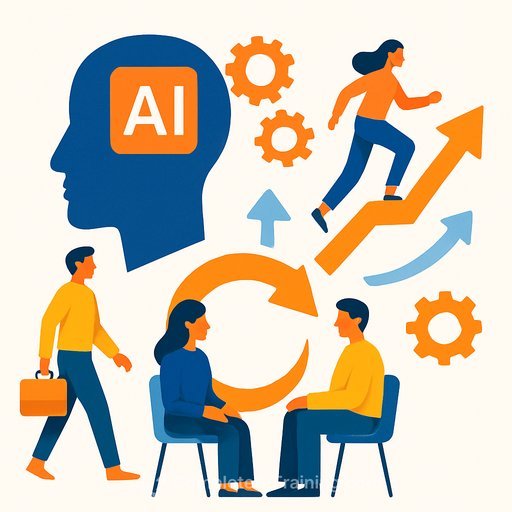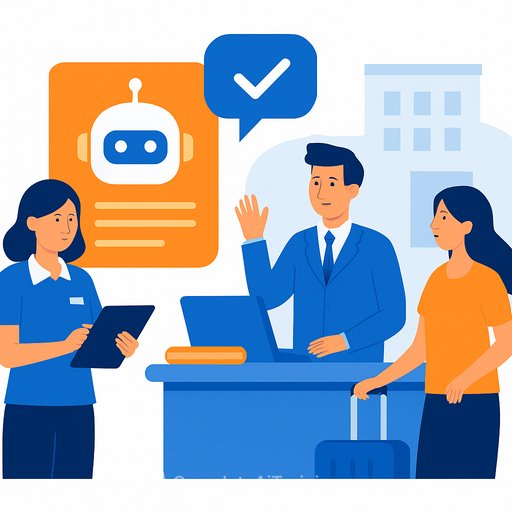HR Playbook: Close Australia's AI Training Gap
Australian leaders say reskilling is non-negotiable. Nearly 9 in 10 executives agree companies must retrain staff affected by AI, yet only 17% of employees received any training last year. That gap puts engagement, performance, and trust at risk.
HR can fix this with a clear plan, simple guardrails, and measurable outcomes. Here's a practical blueprint you can roll out in weeks, not years.
What this means for HR
- Skills risk: Tasks are shifting faster than job titles. Without training, good people get sidelined.
- Engagement risk: No training signals "you're on your own," which fuels turnover and quiet quitting.
- Compliance risk: Untrained use of AI tools can create privacy, bias, and IP issues.
- Cost risk: Hiring for new skills is slower and pricier than upskilling the team you have.
Your 90-day action plan
- Days 0-30: Map impact and choose pilots
- List top 20 tasks per role; flag those that are repetitive, document-heavy, or data-heavy.
- Pick 3 roles for pilots (e.g., Recruiters, HR Ops, Customer Support). Define 3-5 high-value use cases per role.
- Set guardrails: approved tools, privacy rules, and review steps.
- Days 31-60: Train and prove value
- Run short, role-based cohorts (90 minutes per week × 4 weeks).
- Focus on: AI basics, prompt skills, workflow design, and quality checks.
- Measure: time saved, error rate changes, and employee confidence scores.
- Days 61-90: Scale and formalize
- Update job descriptions and competencies with AI-related skills.
- Offer badges or recognition tied to real outcomes (time saved, tasks automated, quality gains).
- Expand to adjacent roles; keep a monthly review to retire what doesn't work.
Role-based training tracks (examples)
- Recruiting: Writing job ads, resume screening, interview question sets, candidate comms, bias checks.
- HR Operations: Policy drafting, knowledge base updates, ticket triage, form processing, audit prep.
- L&D: Course outlines, practice scenarios, assessments, feedback generation, skill tagging.
- People Analytics: Query drafting, summarizing survey comments, building dashboards, data hygiene checks.
Program design: keep it simple
- Format: Micro-lessons, live labs, and on-the-job assignments tied to real tasks.
- Time: Block 2 hours per week per employee. Protect the time on calendars.
- Content: Mix internal SOPs with proven external courses and tool tutorials.
- Safety: Never paste PII or confidential data into public tools; use approved platforms and redaction steps.
Policy levers to make it stick
- Training guarantee: Every role gets a minimum annual AI upskilling quota (e.g., 8-12 hours).
- Job security signal: Tie reskilling to internal mobility pathways, not just automation goals.
- Time and budget: Manager targets for participation; small stipends for verified completions.
- Ethics and review: Human review for outputs that affect pay, hiring, performance, or safety.
Measure what matters
- Coverage: % of roles with defined AI skills and training completed.
- Productivity: Hours saved per task, queue time reduced, tickets closed per FTE.
- Quality: Error rates, rework, policy compliance, candidate NPS or employee CSAT.
- Talent: Internal mobility rate, time-to-fill, retention of at-risk roles.
Communication that calms fear
Be clear and direct: "AI will change tasks, not our commitment to people. We are investing in your skills. Here's your training path, tools you can use, and where to get help." Consistency beats hype.
Recommended resources
- Future of Jobs (WEF): skills shifts and training priorities
- Role-based AI courses (Complete AI Training)
Bottom line
Leaders say retraining is essential. The numbers show most employees aren't getting it. HR can close that gap with a focused 90-day plan, role-based training, and clear metrics that prove impact.
Your membership also unlocks:






